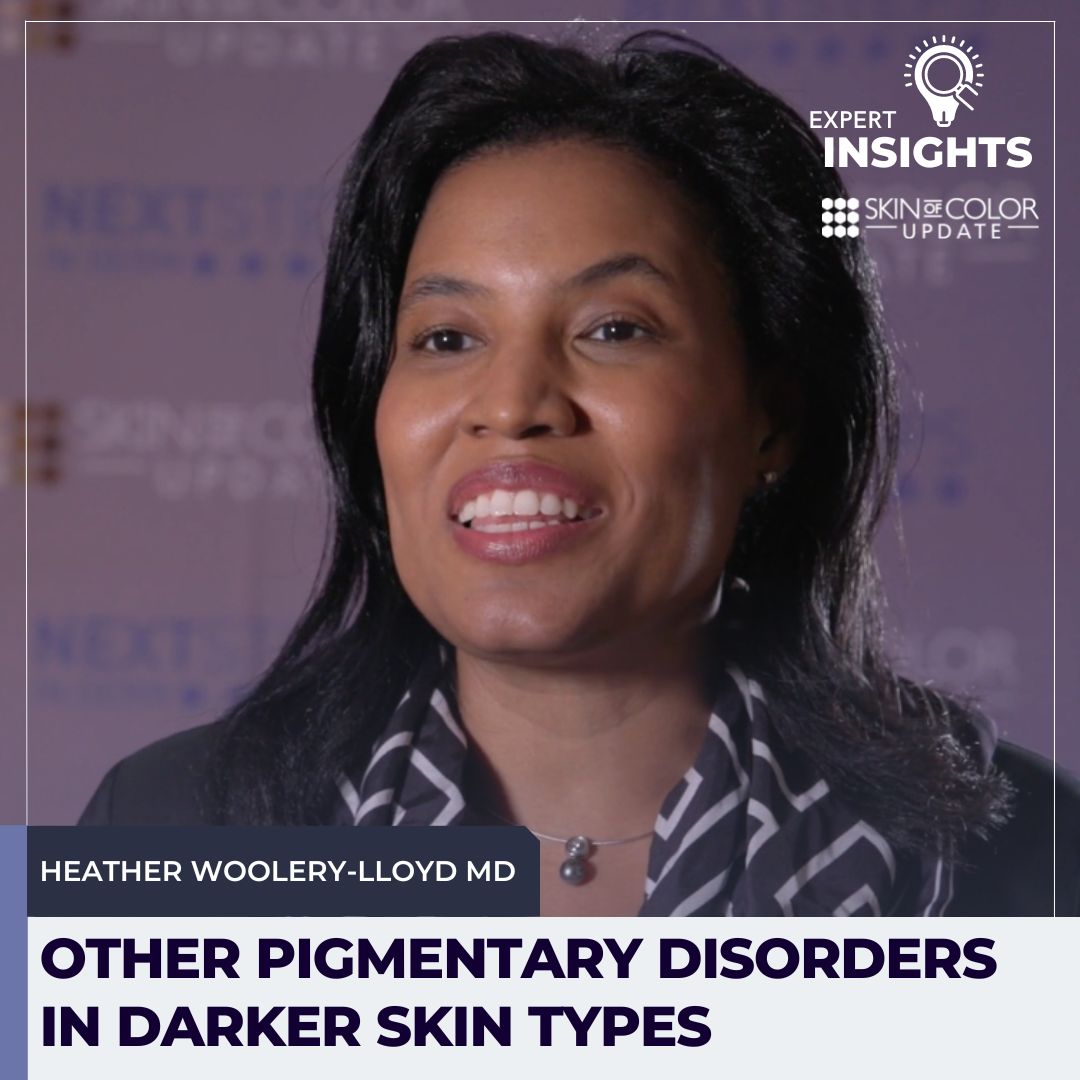Next Steps in Derm, in partnership with Skin of Color Update, interviewed Dr. Heather Woolery-Lloyd, director of the Skin of Color Division for the University of Miami Department of Dermatology. There’s more to pigmentary disorders than melasma and vitiligo. Watch as Dr. Woolery-Lloyd outlines disorders of hyperpigmentation and hypopigmentation. Learn why time matters in treating lichen planus pigmentosus, and why prevention is the best course of treatment for post-inflammatory hyperpigmentation. In addition, find out why patients with progressive macular hypomelanosis are often misdiagnosed and inappropriately treated.
Further Reading
If you want to read more about pigmentary disorders in darker skin types, check out the following articles published in the Journal of Drugs in Dermatology:
Updates In Therapeutics for Lichen Planus Pigmentosus
ABSTRACT
Lichen planus pigmentosus (LPP) is a rare variant of lichen planus presenting most commonly in middle-aged patients of color and characterized by the insidious onset of violaceous, brown, or grayish patches on photo distributed areas. Currently, there is limited data regarding the efficacy of treatments for LPP. We, therefore, sought to provide an analysis of current treatment protocols for this condition.
Advances in Pigmentation Management: A Multipronged Approach
ABSTRACT
Background: Key cellular players regulating human skin pigmentation include melanocytes in the epidermis that synthesize melanin, neighboring keratinocytes that receive and distribute melanin in the upper layers, and fibroblasts in the dermis that affect overlying melanocytes and keratinocytes. In addition, endocrine factors from the blood supply (endothelial cells) and inflammation-related factors play a role. Thus, new strategies for affecting pigmentation need to consider these multiple cell lines to adequately cover various causes and disease processes associated with hyperpigmentation.
Methods: Pathophysiologic mechanisms and cellular pathways involved in melanogenesis were thoroughly reviewed with particular emphasis on the cellular interplay involved in the process. A complex system of interlinking and independent pathways was defined and described demonstrating differing pathways for altered pigmentary disorders – melasma associated with endothelial cell interactions; post inflammatory hyperpigmentation associated with keratinocyte inflammatory mediators (PGE2 in particular); and photodamage involving all 4 cell types. In vitro validation studies were then undertaken to define differing cell group gene expression profiles with selected peptides and other active agents. Melanocytic production of pigment was then tested with these agents to identify key potential players capable of limiting pigmentation.
Results: Hexapeptide-12 and lactoferrin (melanocytes), Hexapeptide-11 (in keratinocytes), and phosphatidylserine (endothelial cells) were identified as major inhibitors of melanogenesis based on their gene expression profiles. This was confirmed by secondary melanin production tests performed on melanocytic lines. Additional active agents were also identified as inhibitors of melanocytic production of melanin, and together, these constituents formed the basis for a novel formulation for use in pigmentary disorders.
Conclusion: A comprehensive scientific narrative of the various facets relating to pigmentation has been presented including differing pathways affecting varied cell lines that effect pigment production. Based on this concept, actives were tested using gene expression studies as well as in vitro melanogenic model testing in different cell lines. Using this novel multi-faceted approach, we have selected and validated a series of active agents to be used in a formulation targeting the complex problem of hyperpigmentation.
Progressive Macular Hypomelanosis
ABSTRACT
Progressive macular hypomelanosis is an under-recognized disorder characterized by the presence of numerous ill-defined hypopigmented macules and patches on the trunk of young adults. Although common, particularly in Fitzpatrick skin types IV-VI, this condition is frequently misdiagnosed and treated inadequately with antifungals or topical steroids resulting in patient frustration. The exact pathogenesis of progressive macular hypomelanosis is unknown; however, recent studies suggest hypopigmentation results from decreased melanin formation and altered melanosome distribution in response to Proprionibacterium. While there are no well-established or consistently effective therapies for progressive macular hypomelanosis, our growing understanding of its pathogenesis urges consideration of alternative treatment strategies. Here, we report five patients with progressive macular hypomelanosis who benefitted from topical and systemic antimicrobial therapy and summarize the current clinical, pathological and treatment paradigms of this disorder.
Did you enjoy this video interview? Find more here


